| George Little Photo Album 1958-59 Stockton Speed Boat Races Photo captions and historical information written by Bob Silva At the 32nd Annual Port of Stockton Regatta in 1958, owner/builder of GIZ-MO 5-E, Al Silva, watches his son Eddie strap on his life jacket. The 5-E was one of the first hydroplanes built in California to compete in the "new" 280 Class. The pair of Crackerboxes in the background are Wendel Tucker's RATTLER 7-P, powered by a GMC straight-six, and Joe Herrin's NO SENSE 65-P with 265 ci Chevy V-8 for power. Owner/driver Lou Joaquin helps pull his 280 SIDE-WINDER 7-E to the launch ramp. SIDE-WINDER and GIZ-MO were built from the same modified Rich Hallett plans. Joaquin won 280 class First Place trophy at the 1958 regatta. Clyde Marney launching his 48 ci hydro MISS TAKE 14-Y with help from fellow competitor Bill Bastida. The Vern Dallman-built hull was powered by a 4-cylinder Crosley. Clark Post's QUEEN BEE 50-B sits in the background. Post purchased the B Racing Runabout in 1956 for $950 from original owner/builder Dick Overpack. Transom view of a 48 ci hydro. Most drivers knelt to drive the small 10-foot hulls. Note the soda bottle stoppers used as transom drain plugs, a common racing accessory in 1958. Ernie Rose, "King of the B's" poses for photographer George Little. Ernie and his B Racing Runabout, LIL' BEE 28-B, held the 1-Mile Straight-a-way and 5-Mile Competition records in 1958. The highly modified Speedliner hull ran a souped-up V8-60 Flathead Ford. The wide variety of hull designs made BRRs a popular APBA class in California If these spectators were looking for a foot throttle in LIL' BEE, they never found one. Ernie Rose's transom-standing, wild bucking bronco rides required the use of a hand throttle as it was impossible for Rose to keep his foot on a gas pedal. He was a 1956 member of Yachting Magazine's All American Racing Team and won five B Racing Runabout National Championships during the 1953 to 1958 racing seasons. Shown on their trailers are L-R: Charles "Pinky" Grace's 280 class RICKEY-DEE 22-E, a modified Hallett design; JOKER IV 10-N a 225 ci hydro designed and built by owner Jerry Gasper; Lloyd Delozier's 136 hydro MY SIN 121-S. Norman Morris bought the JOKER IV in 1961 and converted her to race as a 280. Re-named HONEYBEAR 116-E (replacing the original Hallett-built HONEYBEAR) she won the 280 Hydro Nationals in 1961 with Allan Ford at the wheel. The E Racing Runabout CABANA MORRONE 16-E, owned by Mervin Doyle was formerly Ed Brown's BOUNCY BARBY III. The Ed Brown/Fred Hallett-built ERR was powered by a GMC-6 with a Wayne-Horning head. The boat was the 1956 ERR National Champion and held both the 1-Mile and 5-Mile records when Doyle purchased her in 1958. Matt Pearson and crew members looking over his E Racing Runabout PURPLE PEOPLE EATER 14-E. A 246 ci fuel-injected Dodge Red Ram Hemi replaced the long time ERR class staple, a Flathead Mercury V-8, that once sat in the 14-E. The additional 150-plus horsepower from Red Ram engines made the ERRs the most dangerous runabout class in APBA inboard racing. It wasn't unusual for an ERR to crash at regattas, including at this 1958 Port of Stockton Regatta where Ray Hemmings flipped his MYSTER-E 25-E. Joe Herrin built his Crackerbox NO-SENSE 65-P in 1956 using altered Fred Wickens plans and he won the Crackerbox Nationals with her the following year. Herrin retired from racing in 1963 and sold NO SENSE to Joe D'Angelo. On the left, SIDE-WINDER 7-E awaits the 280 five-minute gun. The other hydros, all 225s, left to right: Lon Graditti's CALIFORNIA KID 20-N, driven by Vern Dallman; Jerry Gasper's Ford Flathead V8-85 powered JOKER IV 10-N; Al Fretias' FORTY-NINER 49-N. Jerry Eschen designed both the 49-N and the 20-N. Both hydros ran Ford OHV straight-sixes. The Port of Stockton offered a sheltered, salt water, 1-mile course with single buoy turns. The California Speedboat Association officiated the APBA sanctioned inboard races. Norman Morris in HONEYBEAR 116-E leads veteran driver Freddie Galente in PE-JO-DE 21-E during the 280's first heat. Both Rich Hallett hulls were converted from the 225 Class to race as 280s, using stock 265 ci Chevy V-8s. "Pinky" Grace driving his new 280 Class hydro RICKEY-DEE 22-E. The 1958 Port of Stockton Regatta was the first time a field of 280 hydros made a start at a Northern California regatta. Before then, the 280s didn't have enough entries for their own heats and had to "step-up" to run with the faster 225 or 266 hydros. A local race in 1959 at the Port of Stockton. The Stockton Boat Club conducted their own races allowing members to compete with their family runabouts. These races were not APBA sanctioned. 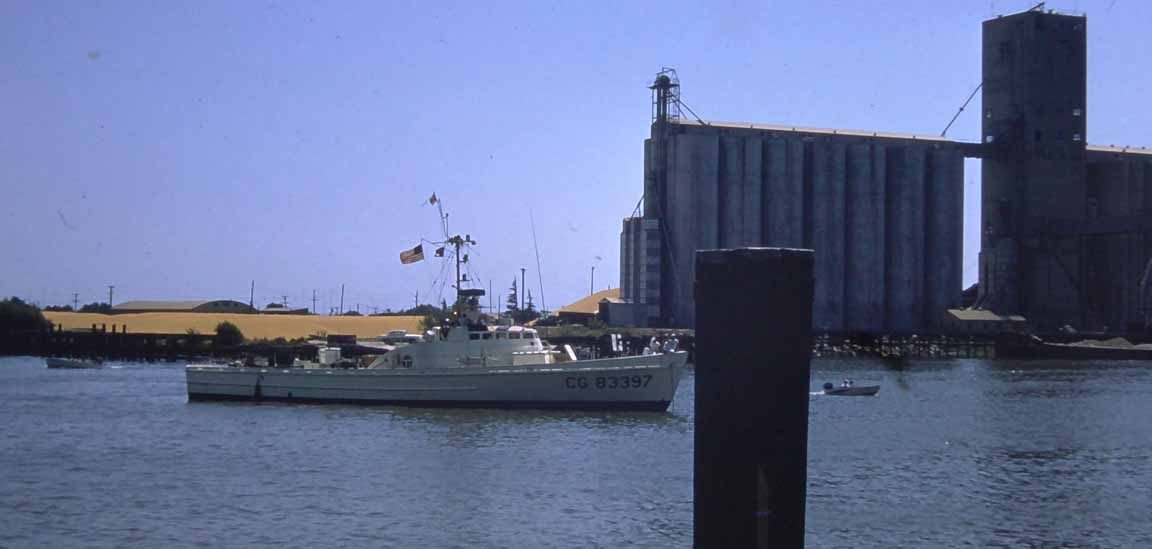
A Coast Guard cutter patrolling the Port of Stockton, a major deep water port located 70 miles from the Pacific Ocean. It handled 4.1 Million metric tons of cargo in 1959. 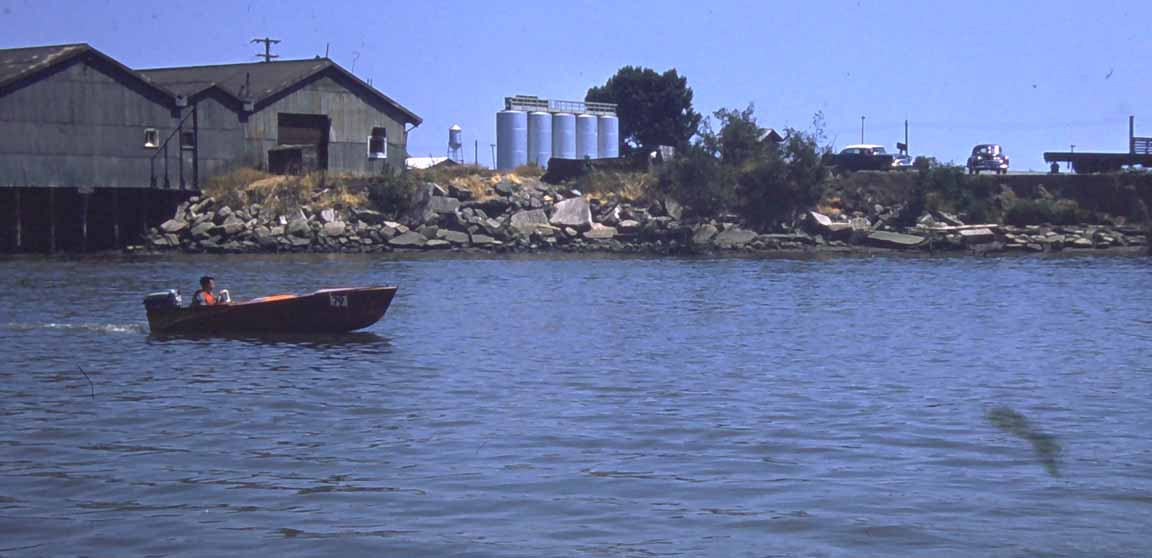
One of the competitors in the local Stockton Club race. In 1933 ships started to navigate the newly created deep-water channel that ran from the Golden Gate Bridge to the Port of Stockton. 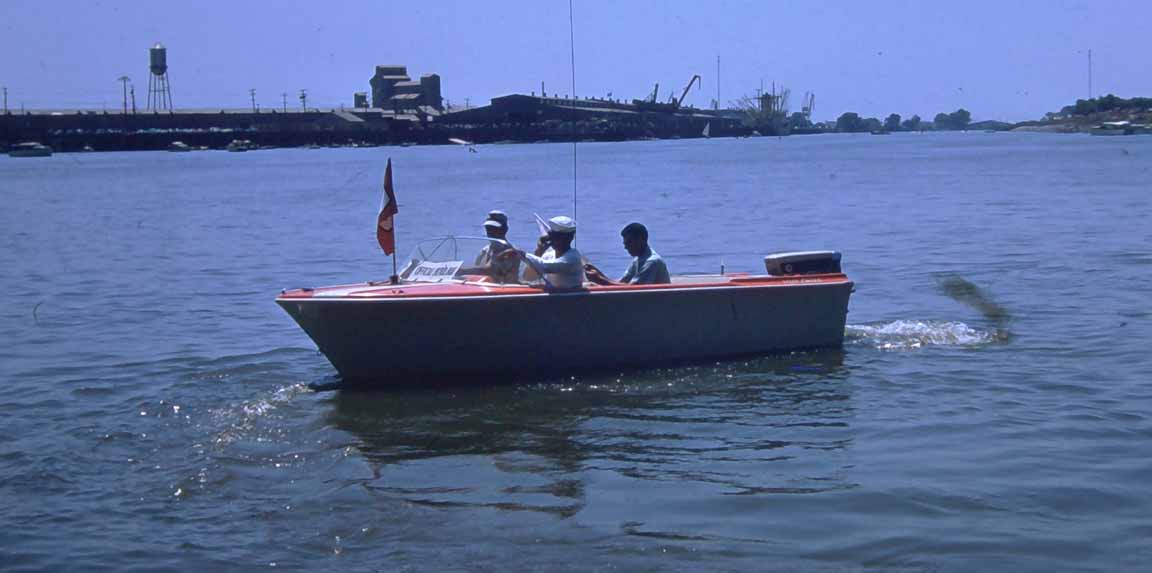
A patrol boat at the 1959 Stockton Boat Club races. 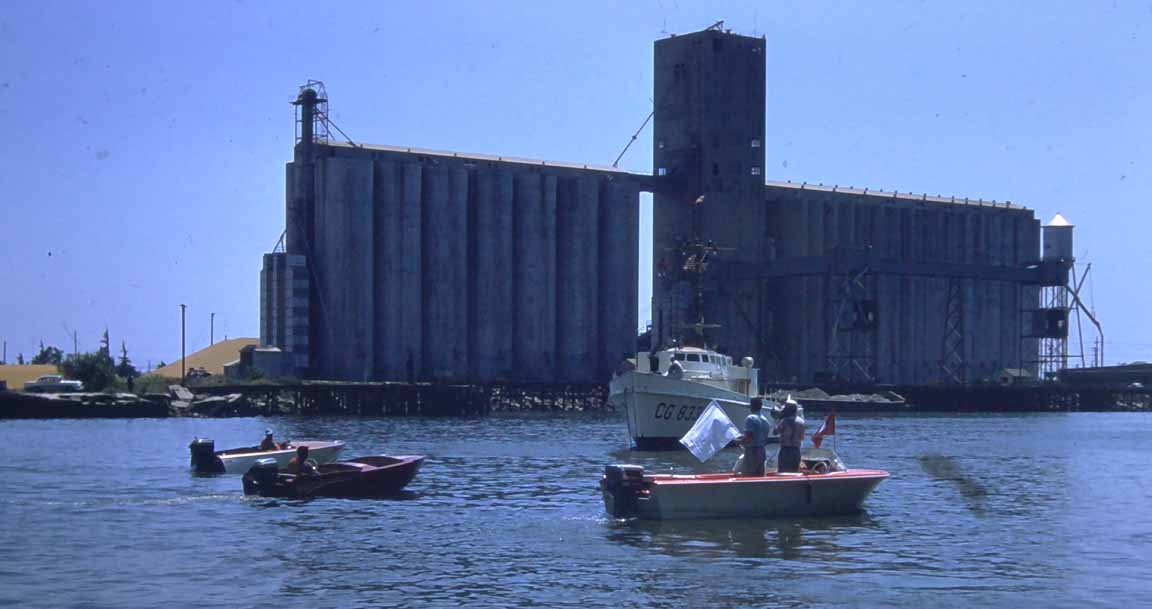
Stockton Boat Club competitors line up behind a pace boat for their start. 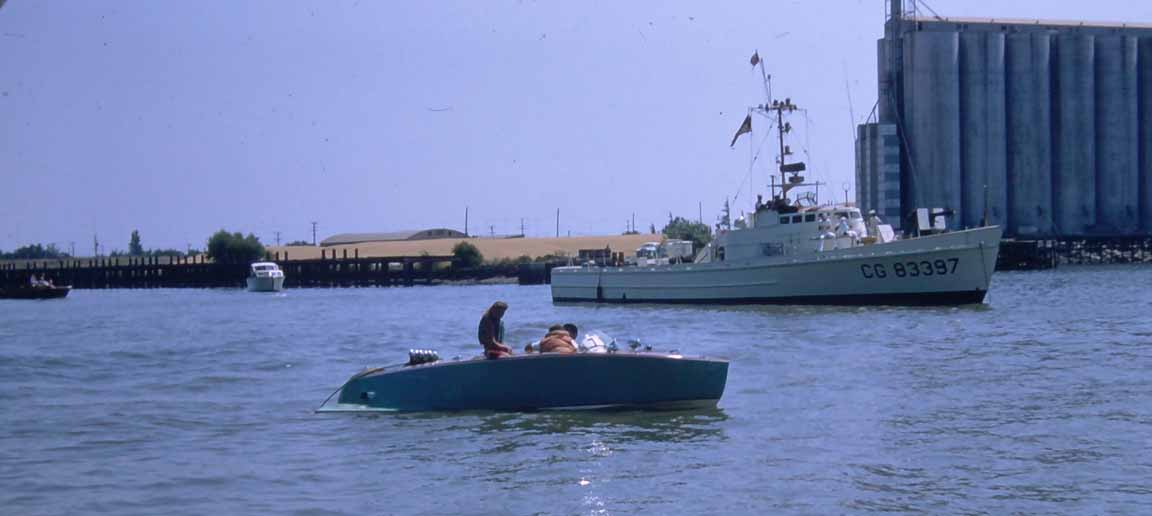
An early SK-style family runabout at the local 1959 Port of Stockton event. Many of the early SK-style boats used Pontiac and Oldsmobile V-8 engines with multiple carburetors. 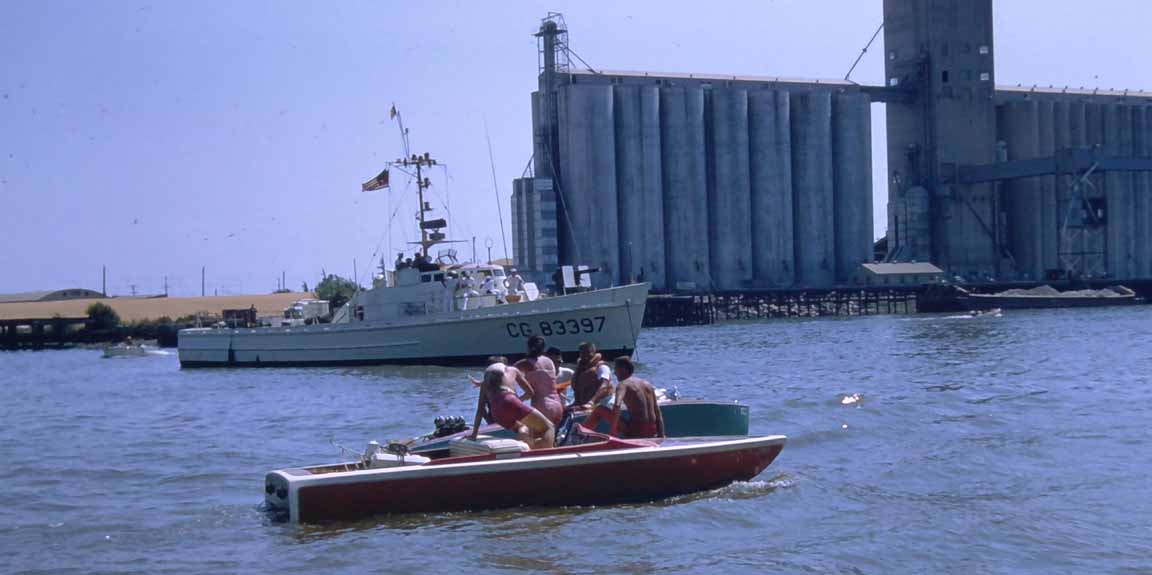
The SK-style inboard runabouts were becoming increasingly popular by 1959. The runabouts were the mainstay of early, organized quarter-mile Drag Boat races. 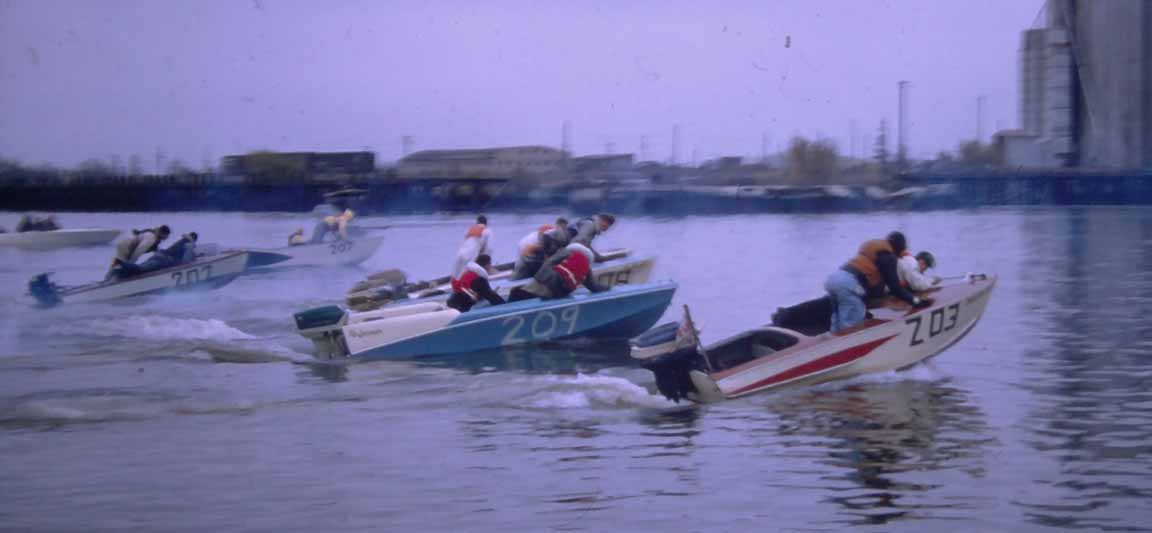
Local Stockton Boat Club competitors climb up on their bows to gain a faster planing attitude. 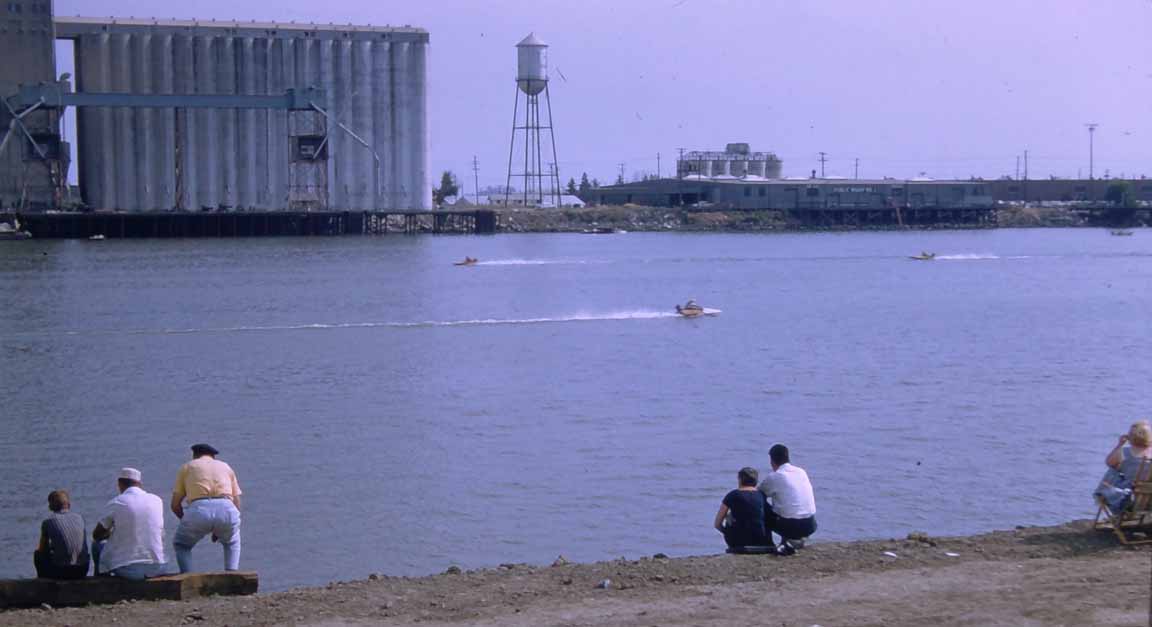
Spectators catch an APBA Stock Outboard Hydro heat in 1958. George Little's photo also captures the Port of Stockton transit sheds, warehouses, grain terminals and rice silos in the background. 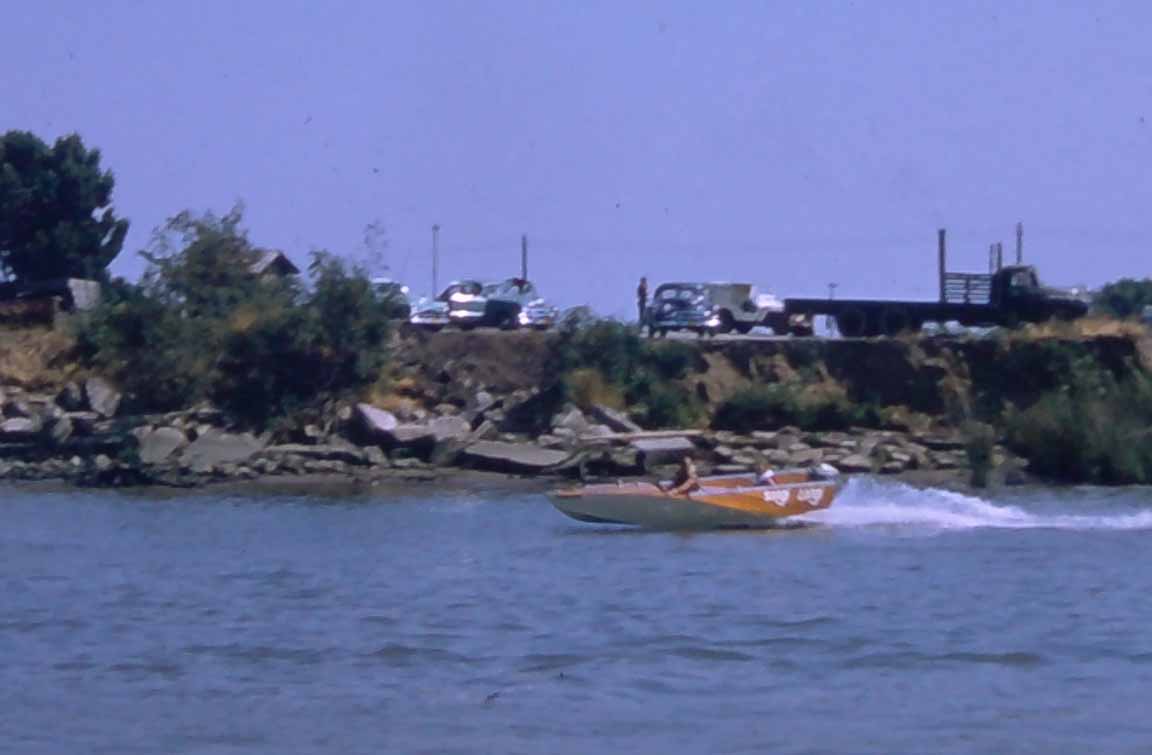
Tail fins were all the rage for autos and pleasure boats in 1959. 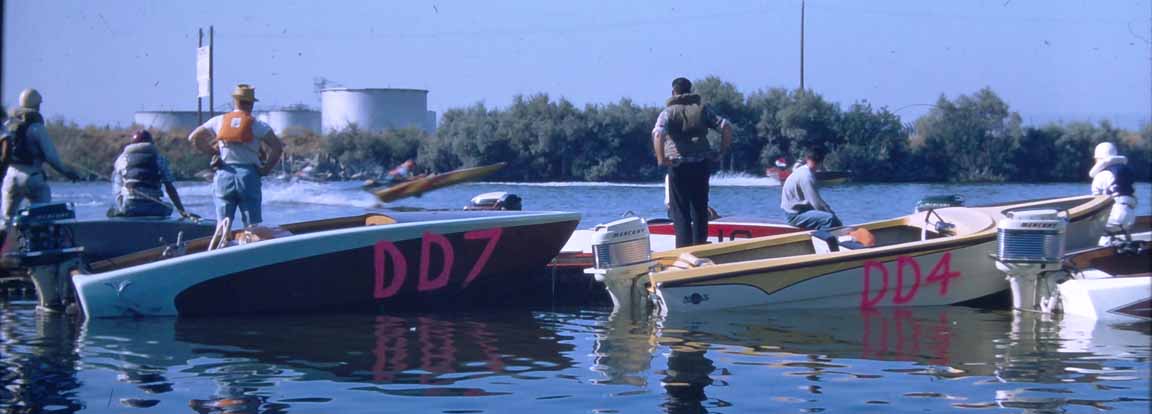
Spectators and Drivers enjoying a high flying APBA Stock Outboard Runabout race. The Port of Stockton was a Naval mooring area during World War II. Destroyers were still anchored there in 1959. 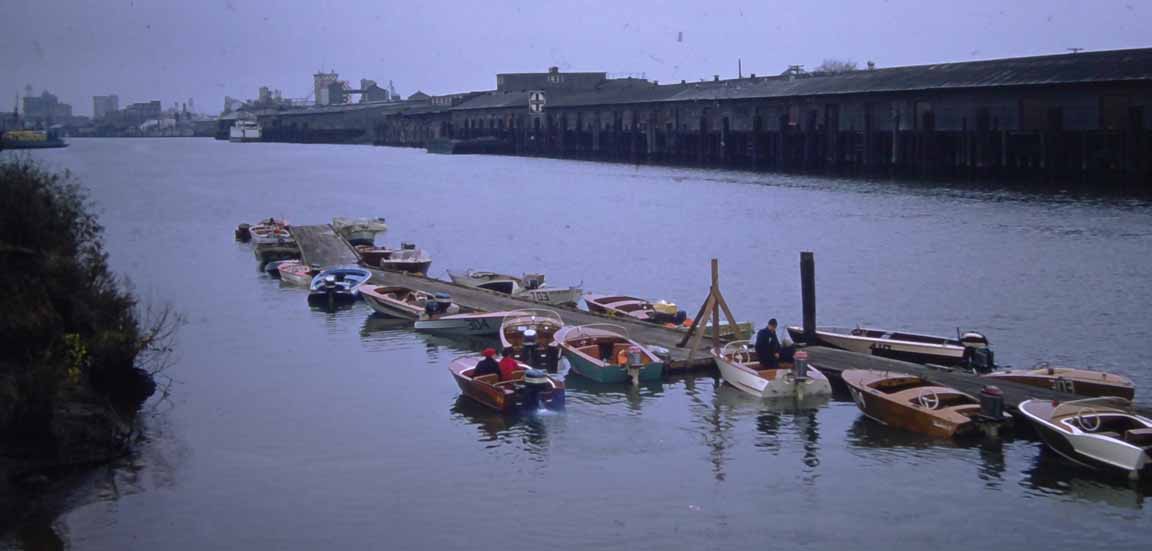
Pleasure boats on a floating dock and another great shot by photographer George Little showing the Port of Stockton Warehouses. The port sits on 4,200 acres and occupies an island in the Sacramento - San Joaquin Delta. 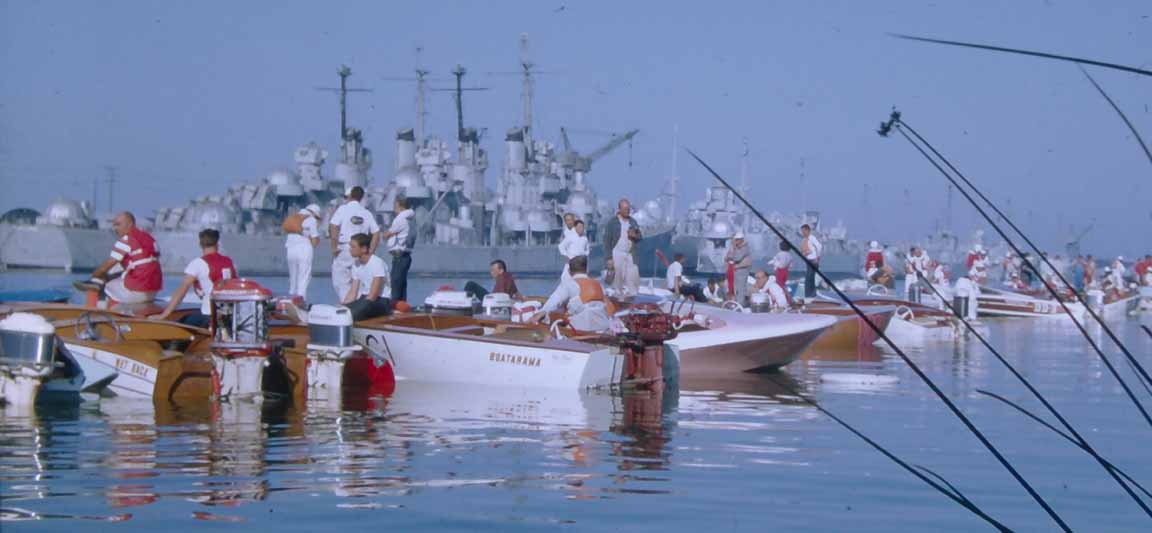
Stockton Club boats stand in stark contrast to a Navy destroyer. 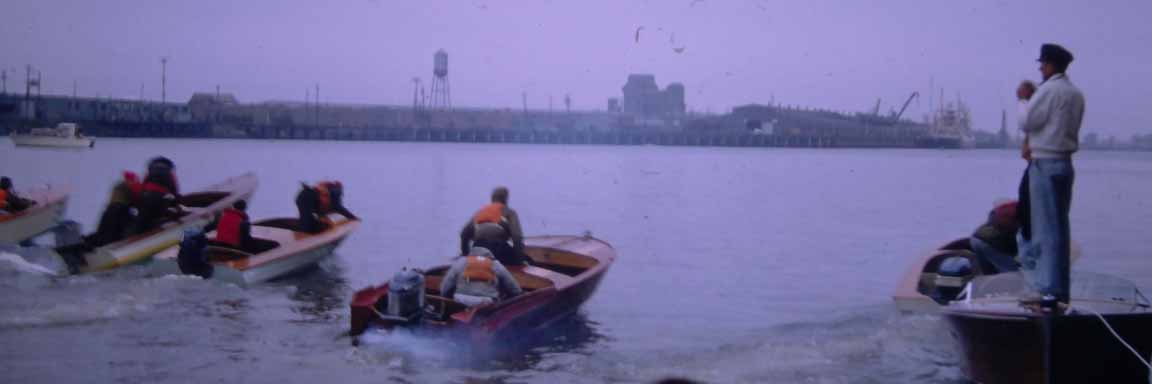
Start of a local boat club race at the Port of Stockton in 1959. 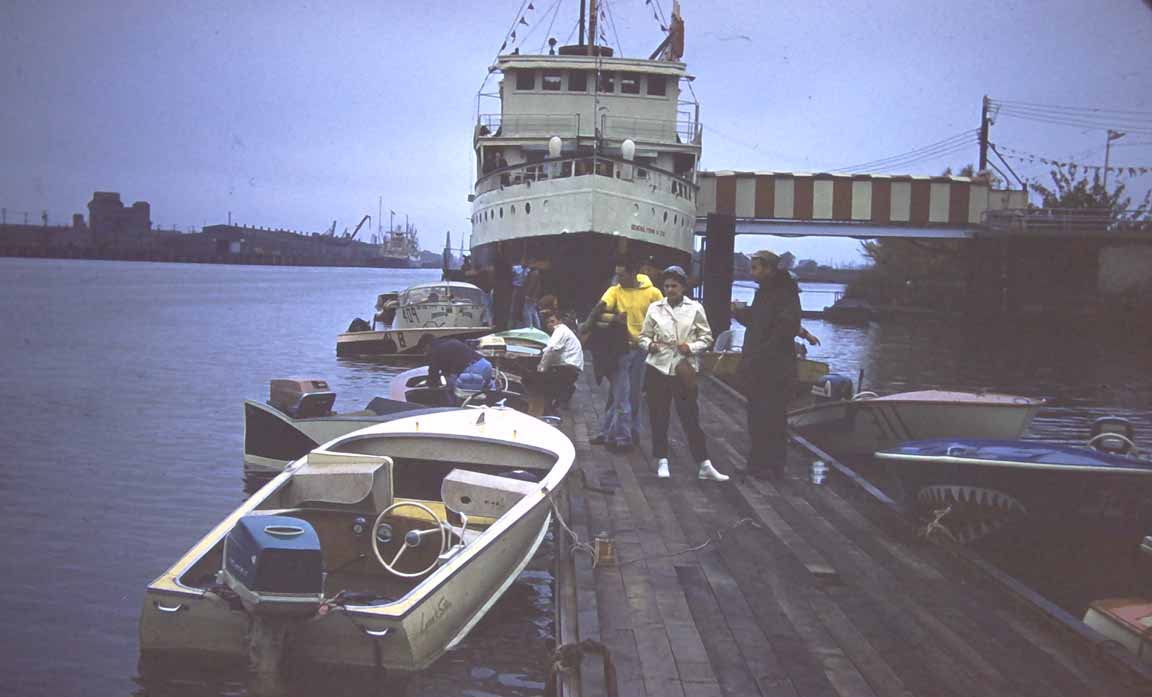
Pleasure boats tied up to a Port of Stockton dock. The blue runabout on the right looks ready to take a bite of dock plank. 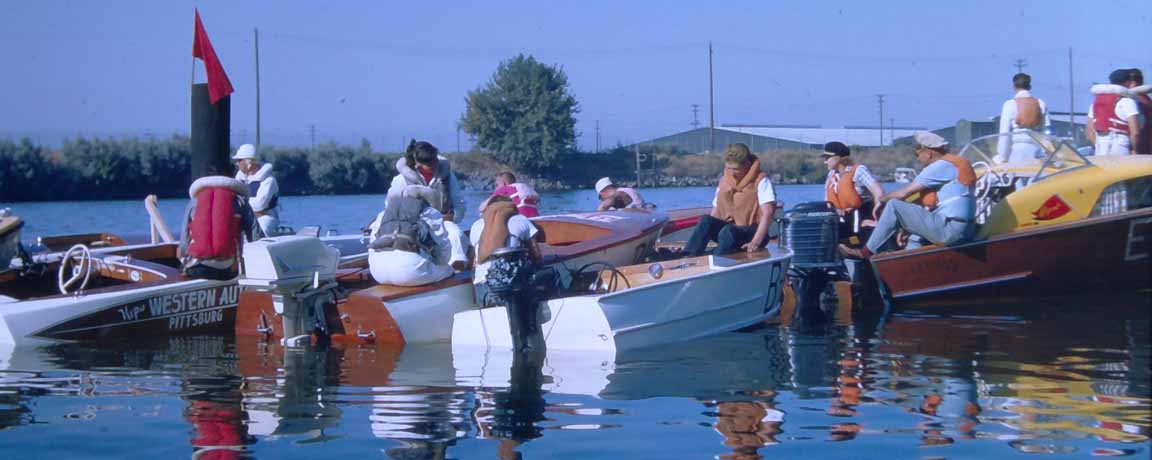
The local Stockton Boat Club races were not APBA sanctioned. Racers did wear life jackets but not helmets. 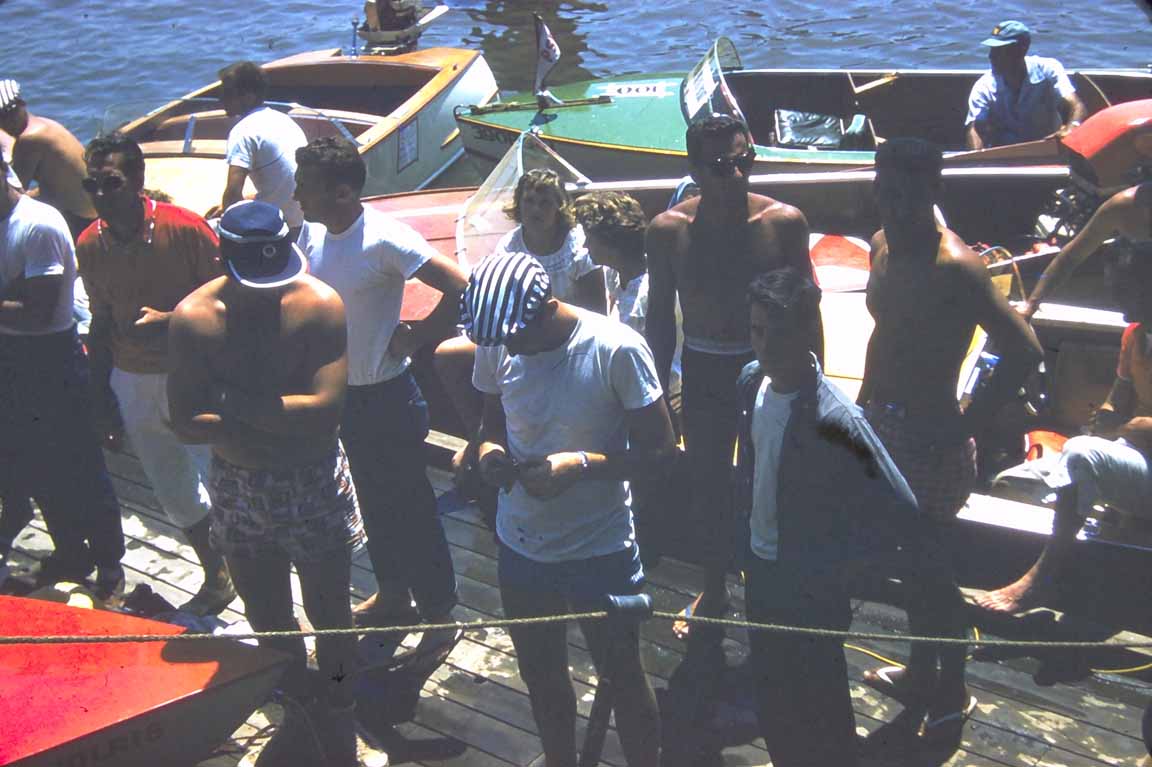
Local Stockton Boat Club racers and their families gather for their trophy presentations. 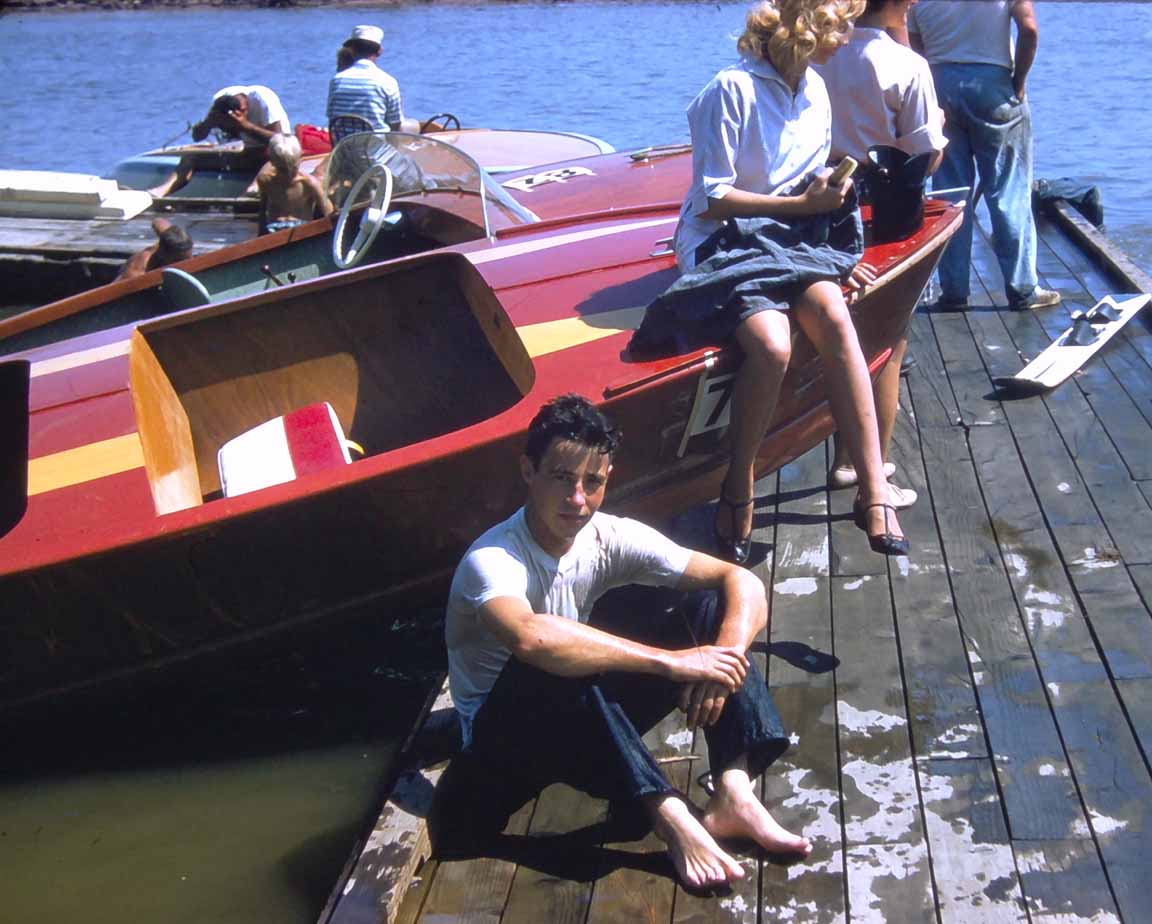
A barefoot, wet, tired Stockton Boat Club racer. 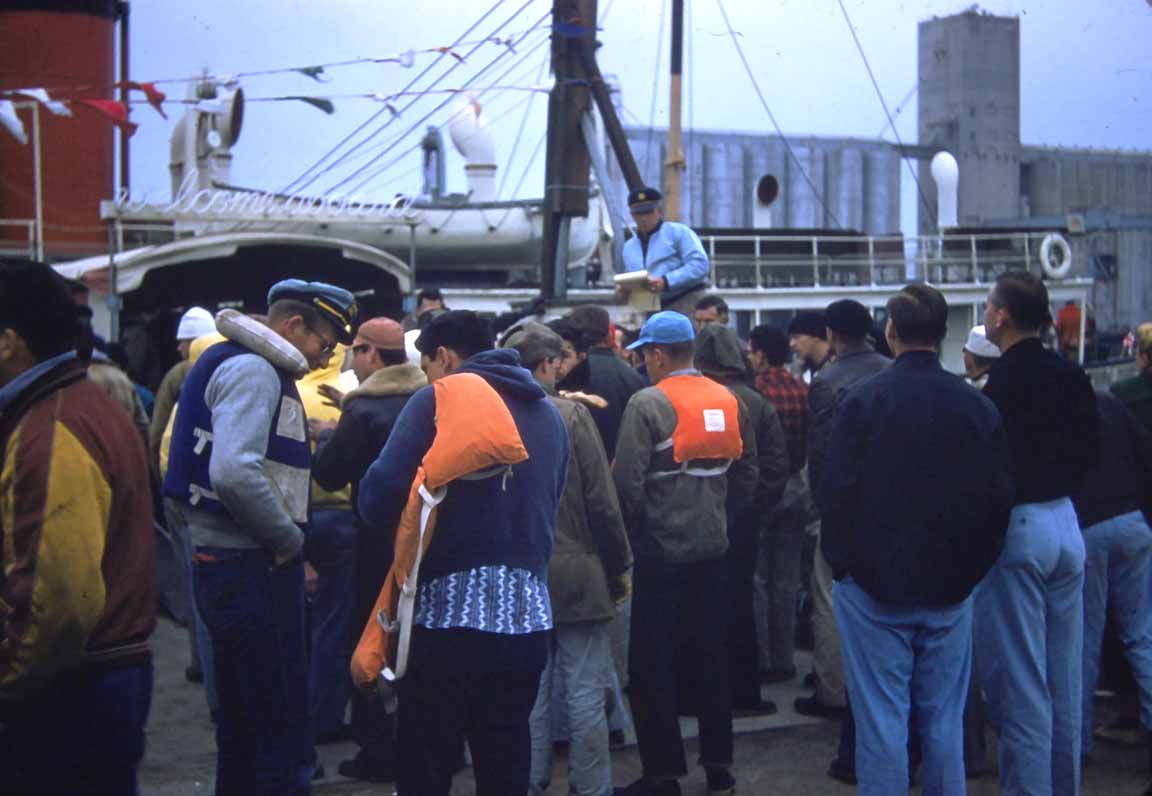
Club racers at this 1959 Port of Stockton race gather for their drivers' meeting. 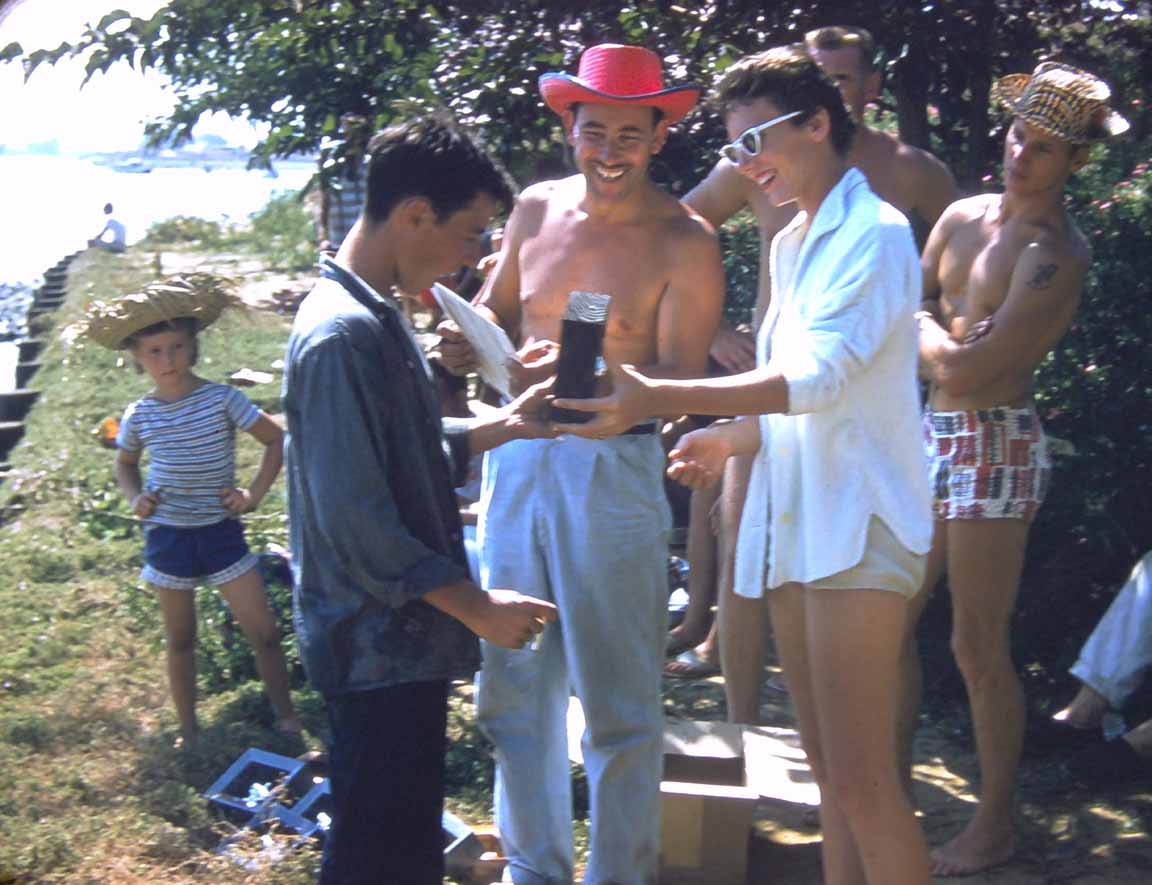 There are smiles all around as a racer receives his trophy at the local Port of Stockton race in 1959. 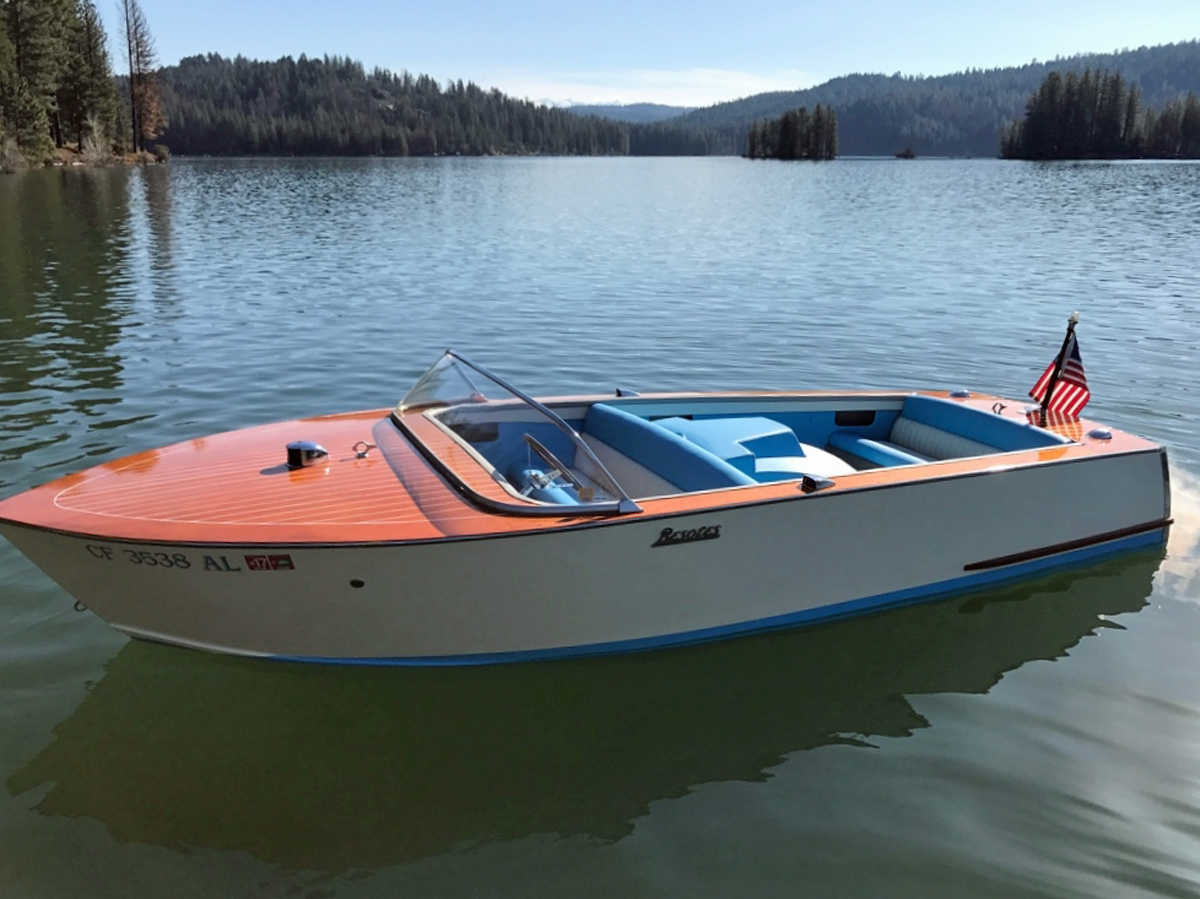 Robert Little's Besotes runabout sports a 327 Chevy for power. Robert's father, George, shot the photos of the APBA inboard races in 1958 and the 1959 local club races held at the Port of Stockton. From Robert Little, "My Dad was George Little. He passed in 2011. Above the pics were from some of the slides from his collection. We lived in Stockton and he grew up on the San-Joaquin Delta with homemade boats and eventually purchased one of the local Stockton made boats by Besotes Brothers. The boat was restored in 2017. It's not a hydro, but with it's 327 V-8, she's a runner". All photos © Robert Little
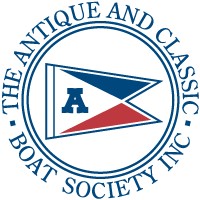
Many thanks to the ACBS for connecting Robert Little to us so we could share his Dad's racing photos. 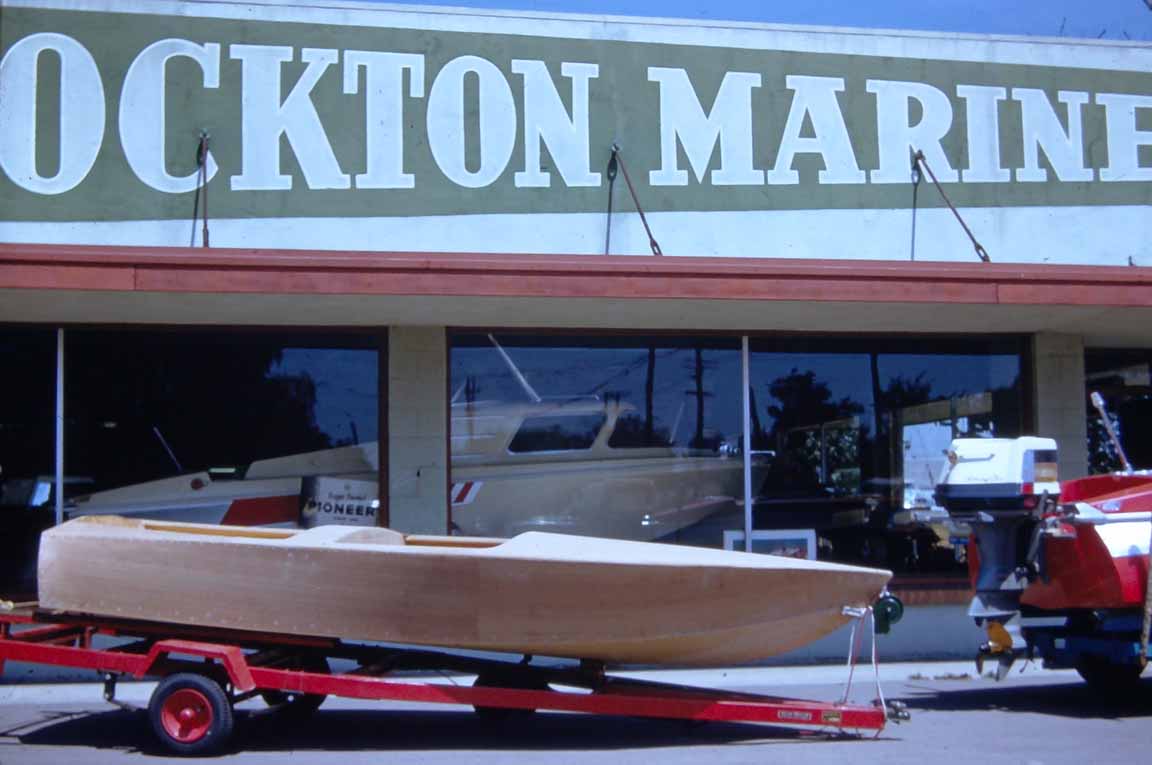
Stockton has a great boat-building history. Two of the better known Stockton speedboat manufacturers in the area were founded by brothers; Stevens Brothers Boat Builders and Besotes Brothers Inboard Speedboats. In addition to speedboats, Thod and Roy Stevens built sailboats, cruisers and yachts. George and Charlie Besotes were known for the fast inboard runabouts they built from about 1950 to 1973. Besotes runabouts are highly sought after and of the 214 built, only 44 are known to exist today. Back to Photo
Albums |